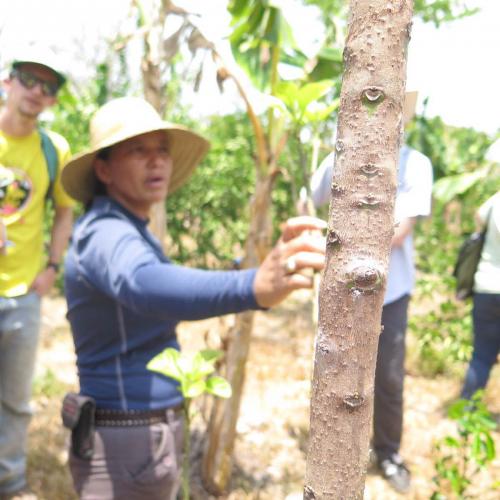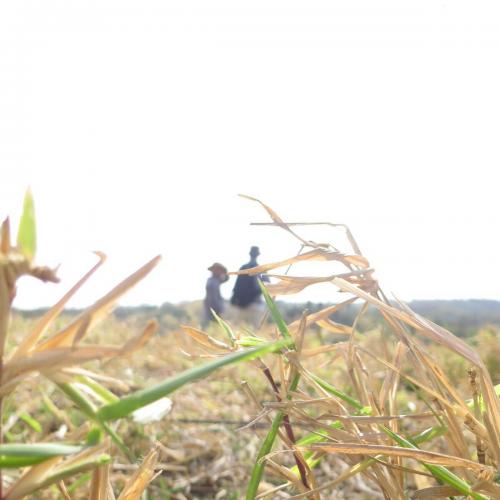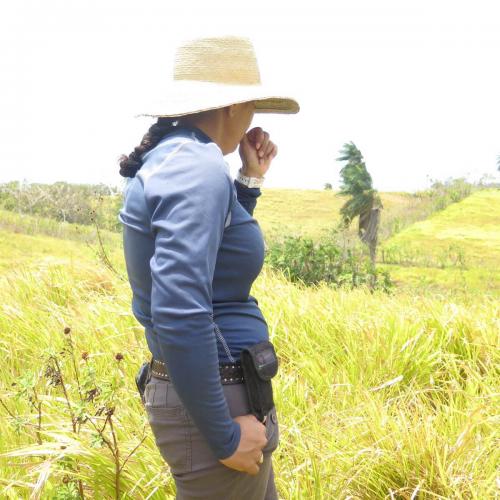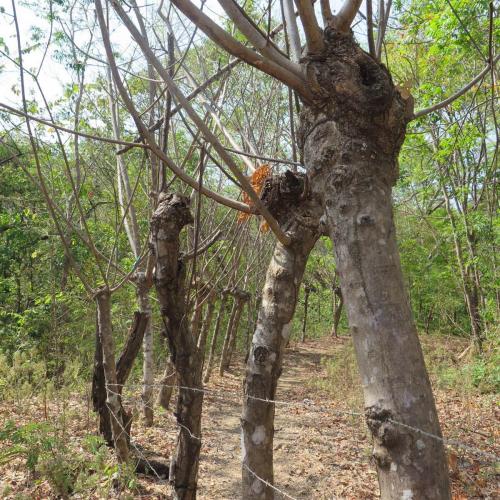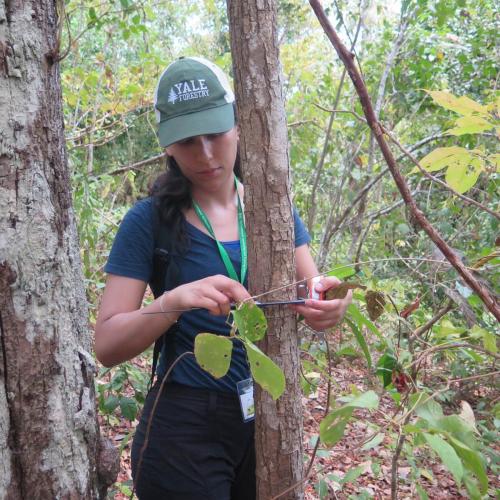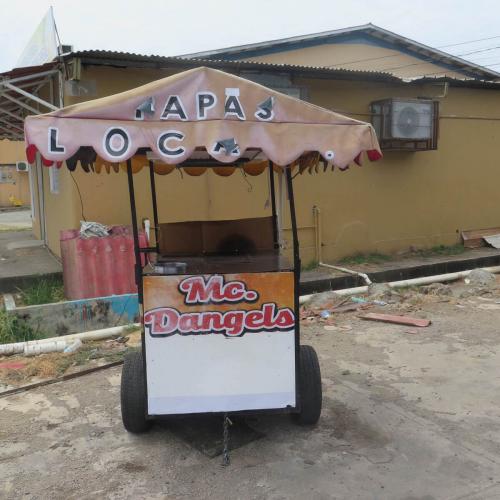Emily Sigman, School of Forestry & Environmental Science, Global Affairs
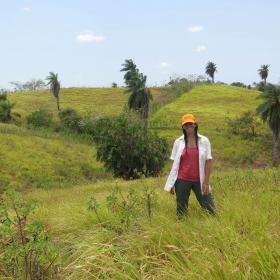
“All in a Days Work” - Panamanian rancher Odielca Solis surveys her holdings in the Azuero Peninsula of Panama.
“Homegarden” - Panamanian rancher Odielca Solis takes Yale School of Forestry Students on a tour of her home garden, an agroforestry plot that includes many fruit tree species like lime, papaya, and mango. The agroforestry system around her home helps Odielka diversify her production, bringing her a wider variety of food and income sources.
“Loli the Cowboy” - Dolores “Loli” Solis shows off the supplemental feed he prepares for his cattle during Panama’s dry season. Loli is a retired police officer who decided to become a cattle rancher. He is working to transition his traditional cattle ranch to an intensive rotational grazing system. Intensive rotational grazing systems in the dry tropics can help ranchers keep larger and healthier populations of cattle, while also reducing the negative environmental impacts often associated with ranching.
“Meeting of Minds” - Local ranchers meet with representatives from Yale’s Environmental Leadership and Training Initiative (ELTI) to share updates. ELTI helps ranchers in the area implement more sustainable and profitable grazing and agroforestry strategies.
“The Usual Suspects” - Cattle ranching is a dominant land use in the Azuero Peninsula of Panama. Regular clearing and burning of dry tropical forests, and planting of aggressive pasture grasses, has long been a common ranching practice in the region. As climate change, economic pressures, and ecotourism become increasing forces in this areas, ranchers are finding new ways to adapt.
“Odi in the Field” - Rancher Odielca Solis surveys her holdings after the end of a long day. She was one of the first ranchers in the region to break with tradition and adopt new ranching techniques. She has planted miles of living fences and created a water pumping system that allows her to rotate her cattle through small paddocks where she pumps water directly to them, rather than grazing them in critical riparian areas. She also maintains an impressive series of wildlife corridors across her property.
“Leucaena” - Leucaena leucocephala is an important “nurse tree” species. Converting degraded pasture lands back into forests can be challenging - once woody vegetation has been removed, the site becomes very hot, dry, and dominated by grasses, making it difficult for new trees to establish. Leucaena is a nitrogen-fixing tree, that brings nitrogen from the atmosphere into the soil and grows quickly to create a cooler, shadier microclimate. A diversity of trees can be planted underneath the Leucaena, either by eager humans, or by birds and animals who disperse seeds naturally from other forests.
“Living Fences” - Ranchers across the Azuero Peninsula often use living trees as fenceposts for their pastures. Many trees are coppicing species - where branches are cut, they will regrow new sprouts, that can be harvested and used to plant more fence posts. Living fences help farmers reduce the cost of fencing, while also providing many environmental benefits, including carbon sequestration, soil and water conservation, wildlife habitat, livestock fodder, and sometimes products for human consumption.
“How High” - Yale School of Forestry Students Javier Gonzales Rivero (MEM ‘19) and Tes Myrie (MF/MBA ‘20) measure the height of a mature tree with Jacob Slusser, a researcher at Yale’s Environmental Leadership and Training Initiative (ELTI) in a parcel of intact dry tropical forest in the Azuero Peninsula of Panama.
“DBH” - Yale School of Forestry Student Monica Nunez-Salas (MEM ‘18) measures the diameter at breast height (DBH) of a tree in a parcel of intact dry tropical forest in the Azuero Peninsula of Panama. Measurements like these help researchers determine the amount of carbon stored in different forests, among many other important forest characteristics.
“McDangles” - A local food cart waits patiently for visitors at a gas station in the Azuero Peninsula. Photo by Thomas Launer, MF ‘19.


